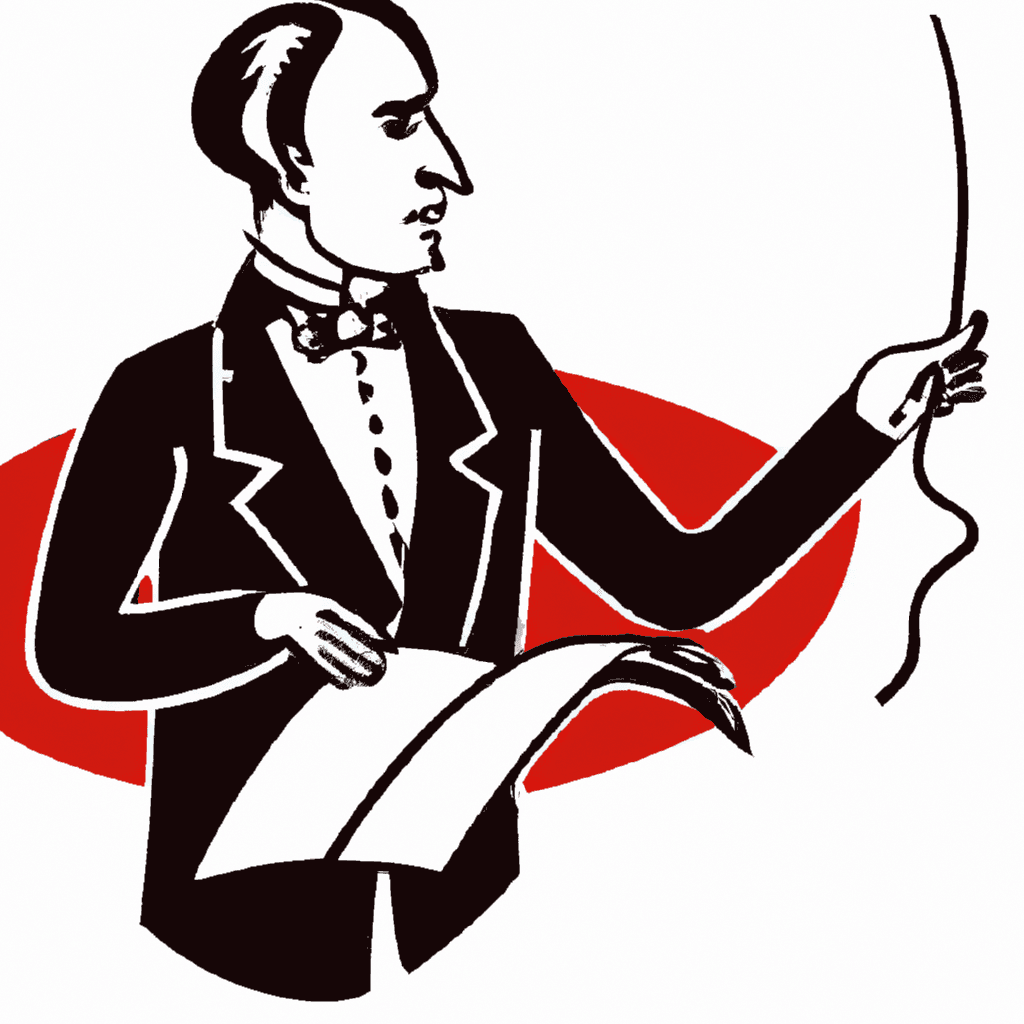Culinary Command: Sharpening Your Content Strategy with Chef-like Multitasking Skills

Culinary Command: Sharpening Your Content Strategy with Chef-like Multitasking Skills
Have you ever watched a chef on TV spinning lots of different plates at once? They're chopping veggies, boiling water, grilling a steak, all while talking to the camera and smiling. It looks like a magic show, right?
Well, in the wild and wonderful world of writing, especially when you're trying to make sure people can find and love your stuff online (that's what we call SEO), you've got to be a bit like those superstar chefs. But instead of juggling pots and pans, you're juggling words, ideas, and some pretty cool tricks to help your readers find you.
In this super-duper long post, we're going to become culinary (that's a fancy word for cooking) commanders of our content (that's the stuff we write). So, tie on your apron, sharpen your pencils (or flex those typing fingers), and let's start cooking up some mouth-watering content!
What is a Content Strategy and Why Does it Need to Multi-task?
Before we start chopping up topics, let's get something straight: what exactly is a content strategy? Think about it like a recipe book for your writing. It tells you what to write, how to make it yummy for your readers, and how to sprinkle in those keywords that make Google happy.
But why does it need to multitask? Imagine you're making breakfast. You can't cook the eggs, then the toast, then the bacon, one after another—it would all go cold! You need to do several tasks at the same time, keeping an eye on everything so it all comes out perfect.
In writing, you want to write cool articles, make sure they're full of helpful info, and check that the right people can find them on the internet. That's your multitasking right there, a slew of activities that, when balanced well, lead to a tasty, satisfying content feast.
Considering the bustling nature of the internet, your content strategy should be dynamic, flexible, and diverse, much like a chef's menu. This involves mixing up content types, from how-to guides and informative articles to engaging videos and infographics, akin to preparing different dishes for various tastes and dietary needs.
The importance of an agile content strategy becomes even more pronounced when unpredictable trends or algorithm changes come into play. Like an unexpected rush in a restaurant, these changes demand quick adaptation and creative problem-solving to keep your audience satisfied and engaged.
Moreover, the digital landscape, much like a culinary scene, is highly competitive. Standing out requires not just quality content but also strategic planning and execution. It involves understanding your audience deeply, much like a chef knows their regular patrons' favorite dishes.
Authors must don multiple hats, becoming analysts, researchers, and SEO experts, in addition to being compelling storytellers. This complexity reflects in the need to optimize for search engines, engage readers on social platforms, and convert visitors into loyal followers or customers.
Effectively managing a content strategy also involves leveraging tools and technology, much like a modern kitchen outfitted with the latest gadgets to streamline cooking processes. Analytics tools, content management systems, and SEO platforms become your digital kitchenware, essential for preparing, cooking, and serving your content effectively.
Syncing content production with marketing goals or business objectives is another crucial aspect of a multitasking content strategy. It necessitates a big-picture view and precise coordination, akin to a head chef overseeing various kitchen stations to ensure timely and harmonious meal preparation.
In the fast-paced digital environment, a "set it and forget it" approach won't cut it. Continuous optimization, testing, and iteration are necessary, mirroring a chef's process of refining recipes based on feedback, seasonal ingredients availability, and evolving culinary trends.
Lastly, the essence of multitasking in content strategy lies in its ability to weave storytelling, information, and marketing seamlessly together. Creating content that resonates, informs, and persuades is akin to delivering a memorable dining experience that leaves guests eager to return.
Like a well-oiled kitchen, a multitasking content strategy requires coordination, skill, and passion. It's about understanding the science behind SEO, the art of engaging writing, and the business acumen to drive results. This tri-fold approach ensures that your content not only reaches its intended audience but also delights and informs them, much like a meticulously prepared dish that satisfies and surprises in equal measures.
The Kitchen of Ideas: Brainstorming Like a Master Chef
A great chef knows that to make an amazing meal, they need the best ingredients. For us writers, our ingredients are ideas—juicy, fresh ones.
Start with the Pantry: What Do You Have?
Every chef looks at what's in the pantry before planning a meal. You look at what you already know, stuff you're good at, and what you're interested in. Like, if you play guitar, love dinosaurs, and are a video game superstar, you've got some cool ingredients to start with. This first step is crucial because it sets the foundation for everything that follows. By taking stock of your existing knowledge and passions, you're ensuring that your content is both authentic and engaging.
But what if your pantry feels a bit bare? Don't worry. Just like a chef might experiment with new flavors or techniques to spruce up a dish, you can also expand your horizons. Learning a new skill, diving into research, or even just tuning into the news can replenish your stock of ideas and provide fresh inspiration.
Utilizing what you already have also means recognizing the unique blend of spices you bring to the table. Perhaps you have a knack for humor or a way of explaining complex topics in simple terms. These traits can become your signature, making your content stand out in a crowded field.
Another aspect of starting with the pantry is understanding your limitations. Just as a chef might need to work around dietary restrictions or ingredient availability, you also need to be realistic about what you can achieve with the resources at your disposal. This might mean focusing on quality over quantity or finding clever ways to repurpose existing content.
As you review your existing content and skills, consider how they can be combined in new and interesting ways. Much like a chef might discover a surprising harmony between seemingly disparate ingredients, you might find that blending different areas of expertise can yield innovative and compelling content.
Don't overlook the value of inventory management, either. In the culinary world, this means ensuring ingredients are used before they spoil. In content creation, it means revisiting old topics with new insights or updating outdated posts to keep them relevant. This not only maximizes your resources but also keeps your content fresh for your audience.
Exploring the pantry also involves knowing what's popular and what's not. Trends change, and what was once a hot topic might now be considered passé. Keeping your finger on the pulse of your field can help you avoid investing in content that's unlikely to resonate.
Remember, the pantry is not static; it evolves over time. Regularly taking inventory and being open to replenishing it means you can continue to create engaging and relevant content. This might mean dedicating time to learning, networking, and exploring new interests.
Lastly, leveraging your pantry effectively requires organization. Just as a chef might categorize ingredients for easy access, organizing your ideas, research, and drafts can streamline the writing process. This might involve digital tools or simply a well-maintained notebook, but the key is having a system that works for you.
In essence, starting with the pantry is about making the most of what you have while being open to growth and adaptation. It's the first step in a process that transforms raw ingredients—your ideas, knowledge, and skills—into something greater: engaging, delicious content that keeps readers coming back for more.
Visit the Market: Research and Gather
Chefs go to markets to find new, exciting ingredients. For us, that means exploring! Read books, watch videos, and ask questions about stuff you want to know more about. The cooler the stuff you find, the tastier your writing will be. Visiting the market for a content creator is akin to a chef seeking out the freshest, most unique ingredients for their next masterpiece. It's a quest for knowledge, inspiration, and the raw materials needed to craft captivating, informative content.
The research process is vital in ensuring your content is not only engaging but also accurate and valuable. Whether it’s scouring online databases, interviewing experts, or conducting surveys, each method of gathering information adds depth and authenticity to your work. It's comparable to a chef sourcing the finest local produce or exotic spices that elevate a dish from good to unforgettable.
Engaging with your audience can also provide a wealth of insights, much like a chef might gather feedback from diners to refine their dishes. Social media channels, comments sections, and forums are fertile grounds for understanding what your readers are curious about, what challenges they face, and what content they crave.
Staying up-to-date with industry news and trends is another essential element of visiting the market. In the culinary world, this might mean keeping tabs on emerging food trends or sustainability practices. In content creation, it involves understanding shifting SEO landscapes, algorithm updates, and content preferences. This awareness ensures your content remains relevant and finds its way to your intended audience.
Networking with fellow content creators and professionals in your field is akin to chefs collaborating or visiting each other's restaurants for inspiration. These interactions can spark new ideas, provide opportunities for collaboration, and expose you to different perspectives and styles.
Exploring different formats and platforms can also open up new avenues for presenting your content. From interactive infographics to captivating videos, experimenting with various mediums can enhance your message and reach different segments of your audience, much like a chef experimenting with molecular gastronomy or fusion cuisine to mesmerize diners.
Adopting a curious and open-minded approach is key to making the most of your visits to the market. Just as a chef might discover a new favorite ingredient in an unexpected place, you too might find inspiration in unlikely sources. Being receptive to new ideas and willing to explore unfamiliar territories can lead to groundbreaking content.
However, it's also important to be discerning in your research. Just as a chef selects only the best ingredients, ensuring the information you gather is reliable and from credible sources is crucial for maintaining the integrity of your content.
Documenting your findings effectively is another critical aspect of the process. Just as a chef might jot down notes on flavor combinations or cooking techniques, keeping detailed records of your research can streamline the writing process and ensure you don't overlook valuable insights.
Ultimately, visiting the market is about enriching your content with diverse, high-quality inputs. It's a process that involves curiosity, diligence, and a keen eye for what truly enhances your work. By embracing this approach, you can ensure your content remains fresh, informative, and irresistible to your audience.
Seasonal Specials: Trending Topics
Just like chefs use seasonal veggies or celebrate holidays with special dishes, we writers should look for what's popular right now. It could be a new movie, a cool app everyone's talking about, or a holiday like Halloween or Christmas to theme your writing. Seasonal specials and trending topics are the secret sauce that can add that extra zing to your content, making it more relevant, timely, and engaging for your audience.
The practice of incorporating seasonal specials into your content is very much like a chef preparing a limited-time menu. It taps into the current mood and interests of your audience, offering them something that resonates with their immediate experiences and desires. Whether it's articles that align with upcoming holidays, pieces that leverage current events, or content that ties into viral phenomena, playing to the season can make your work feel more alive and connected to the wider world.
Staying on top of trending topics requires keeping your finger on the pulse of popular culture, news, and social media buzz—much like a chef staying abreast of culinary trends and seasonal produce availability. Tools such as Google Trends, social media listening platforms, and news aggregators can be invaluable in identifying what's capturing public attention, ensuring your content is both topical and sought-after.
However, it's important to approach trending topics with authenticity and relevance to your niche. Just as a French patisserie wouldn't suddenly offer sushi for Christmas unless there's a unique twist or connection, your content should align with your brand and audience's expectations, even when tapping into trends.
Leveraging seasonal specials and trends also implies a degree of agility in content planning and production. Chefs might need to quickly adapt their menus based on fresh produce availability or upcoming holidays. Similarly, content creators should be ready to pivot or expedite content production to capitalize on trending topics before they wane. This dynamic approach can keep your content fresh and exciting, encouraging ongoing engagement from your audience.
Moreover, themed content around holidays or seasons can provide a familiar context for your audience, making your content more relatable and shareable. Whether it's a guide to the best tech gifts for the holidays or travel tips for summer, contextualizing your content within the season can enhance its appeal and utility.
Engaging with trends and seasonal content also offers an opportunity to experiment with different content formats and channels. For instance, a video round-up of Halloween-themed DIY projects might attract more engagement than a traditional blog post. Exploring various mediums can uncover new ways to connect with your audience and amplify your message.
It's also worth considering the evergreen potential of seasonal content. While trends may come and go, certain topics have a cyclical relevance. Content that can be updated and repurposed for the next season or trend not only maximizes your efforts but also builds a foundation of versatile, engaging content that stands the test of time.
Collaborating with influencers or other content creators can also amplify your reach and credibility when tackling trending topics. Much like a guest chef can invigorate a restaurant's menu, guest bloggers, co-authored pieces, or shared campaigns can introduce fresh perspectives and attract new audiences to your content.
While chasing trends, it's crucial not to lose sight of quality and substance. The savviest content creators balance the allure of trending topics with the depth and value synonymous with their brand. This ensures that even as they attract attention with timely content, they also cultivate a reputation for reliability and authority in their field.
In summary, incorporating seasonal specials and trending topics into your content strategy requires a blend of awareness, agility, and authenticity. By treating these elements as ingredients to spice up your content menu, you can serve up a more engaging, relevant, and delicious experience for your audience, keeping them coming back for more.
Cooking Up Paragraphs: Structuring Your Piece
Great, so we have our ingredients (ideas), and now we need to start cooking (writing). But you don't throw everything in a pot and hope for the best. You need a recipe (structure).
The Base: Introduction
This is where you grab your reader's attention. Tell them what you're gonna tell them. Make them hungry for more! The introduction of your content serves as the enticing aroma that draws readers in, captivating their curiosity and setting the stage for what's to follow. Similar to how a chef carefully plans the first course to set the tone for the meal, your introduction must be crafted with care to ensure it promises and delivers intrigue.
Creating an impactful introduction starts with understanding your readers' preferences, needs, and pain points. This mirrors a chef's consideration of their guests' dietary preferences and expectations. By addressing these from the get-go, you immediately establish relevance and foster a connection with your audience.
Incorporating a hook in your introduction, be it a surprising statistic, a thought-provoking question, or a compelling anecdote, is like serving a unique amuse-bouche that piques interest and leaves the reader craving more. This hook should resonate with your readers’ interests and align with the overall theme of your piece, setting the tone for the depth and flavor of your content.
Clearly outlining what the reader can expect to learn or gain from your piece acts as a menu preview, guiding them through what's in store and why it's worth their time. This clarity not only retains interest but also establishes the value upfront, similar to a chef explaining the inspiration behind a dish and its components.
The introduction is also an opportunity to infuse your unique voice and style, offering a taste of the personality behind the words. Much like a signature dish reflects a chef's culinary style and philosophy, your introduction should capture and convey your distinct voice, laying the groundwork for a cohesive and engaging piece.
While setting up expectations, it’s important to manage them realistically. Overpromising or straying too far from your main topic can lead to reader dissatisfaction, similar to diners’ disappointment if a dish fails to deliver on its menu description. Ensuring alignment between your introduction and the content that follows is key to maintaining credibility and trust.
Transitions from the introduction to the body of your piece should be smooth and logical, guiding the reader naturally through your narrative or argument. This is akin to a well-curated meal where each course seamlessly leads to the next, enhancing the overall experience.
Ending your introduction with a compelling reason for the reader to continue—be it a question left unanswered, a preview of an intriguing insight, or the promise of a solution to a problem—ensures that your reader, much like a diner anticipating the next course, remains engaged and eager to delve deeper into your content.
In crafting your introduction, it's useful to revisit and refine it after drafting your piece. Sometimes, the act of writing brings clarity and focus that can sharpen your introduction, ensuring it accurately reflects and enhances the body of your content. This iterative process is much like tasting and adjusting seasonings in a dish before serving.
Ultimately, the introduction is your chance to make a memorable first impression. By investing the time and effort to craft an engaging, clear, and enticing opening, you can captivate your readers from the start, inviting them on a rewarding journey through your content.
The Filling: Body
Now, you put in all the yummy details. Break it down like a chef breaks down a recipe: step-by-step. In writing, these are your paragraphs. Make sure each one is about one idea, sort of like each step of the recipe is about one part of the process. The body of your content is where the bulk of your message, arguments, and insights reside, much like the main course of a meal. This section should be satisfying, filling, and structured in a way that delights and informs the reader, taking them through a meticulously crafted journey of flavors and ideas.
Crafting the body of your content involves a balance between depth and digestibility. Each paragraph, like every component of a dish, should be rich enough to stand on its own yet perfectly complementary to the others. This ensures a harmonious blend of information and narrative that keeps the reader engaged and absorbing your message.
Organization is key to a well-structured body. Just as a chef arranges a plate for maximum impact and ease of eating, your paragraphs should be ordered logically to build your argument or story in an intuitive, compelling manner. Transitioning smoothly between paragraphs avoids disjointedness, much like ensuring flavors in a dish blend well together.
Employing subheadings within the body of your content can act as course separations, giving the reader a moment to digest and anticipate what’s next. These markers guide the reader through your content, providing structure and making it easier to follow your train of thought or narrative.
Diversity in sentence structure and length adds rhythm and interest to your writing, akin to varying textures in a dish that keep each bite interesting. This stylistic consideration can make your content more pleasurable to read, holding the reader's attention throughout.
Evidence, examples, and data are the spices that enhance your content, providing credibility and flavor. Just as a chef uses seasoning to elevate a dish, these elements can enrich your argument or narrative, making it more compelling and convincing.
Incorporating storytelling elements or case studies within the body of your content can make it more relatable and
Orchestrating Success: 5 Conductance Principles for Managing Creative Teams
Unlocking Efficiency: 5 Time Management Techniques for the Multitasking Content Manager
5 Urban Planning Principles to Better Manage Multiple Blogs
Top 5 Strategies for Streamlining Your Content Management Workflow

Orchestrating Content: 5 Conducting Techniques for Managing Multiple Blogs

5 Unexpected Lessons Content Managers Can Learn from Orchestral Conducting

Orchestrating Content Harmony: 5 Strategies for Managing Multiple Blogs

Mastering the Symphony of Content: Editorial Strategies Inspired by Orchestral Conducting

Navigating the Content Cosmos: 5 Astronomical Techniques for Managing Multiple Blogs

Harmonizing Tasks Like a Maestro: 5 Lessons in Managing Multiple Blogs from Orchestral Conducting

5 Time Management Strategies Inspired by Chess Grandmasters for Content Managers

Top 5 Symphony Orchestra Strategies to Fine-Tune Your Blog Management Skills

Harmonizing Content: The Symphonic Approach to Managing Multiple Blogs

Harmonizing Your Content: Lessons from Orchestral Conducting for Managing Multiple Blogs

Five Mind-Mapping Techniques to Organize Your Content Strategy Like a Pro

Unlocking Growth: Top 5 Growth Hacking Case Studies for Physical Products
